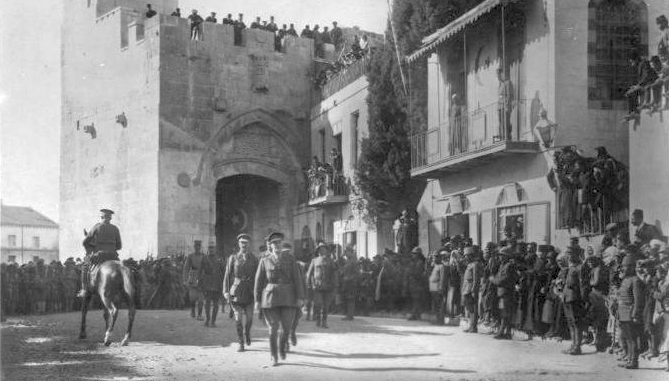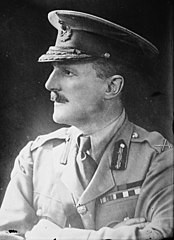Within the Walls
The walls of Jerusalem tell a story of thousands of years, and they also tell a story of the thousands of people who over time, have lived within them.
The route of the walls today was literally set in stone after the Roman Emperor Hadrian conquered the city in 134 AD. Before that conquest, the route of the walls lived and breathed, moved and changed, making ancient Jerusalem either sometimes bigger or smaller than it is today – and as in the case of King David, even outside the present walls.
After King David famously conquered Jerusalem from the Jebusites, he built his capital south of today’s Old City. In what is known as the City of David, visitors today can take a thrilling underground exploration of the remnants of the original Jerusalem. When Solomon his son became king, he expanded the city northwards to incorporate the Temple Mount. From there, Jerusalem grew and grew. After the destruction of the Ten Tribes of the Kingdom of Israel, King Hezekiah expanded the city westwards towards the upper hill in order to incorporate the fleeing Jewish refugees. Not to be outdone, a few hundred years later the Herodian kings built in the northwest quarter and added another wall. Walls were very important in days gone by. Usually massive structures, with guard towers, they protected the cities from invasions. Jerusalem is no different.
“The only wall surrounding Jerusalem which has never changed its course, is the Eastern wall”
The only wall surrounding Jerusalem which has never changed its course, is the Eastern wall, which hugs the Kidron valley – a ravine that was much deeper thousands of years ago. A view from the Mount of Olives towards that wall, even reveals the ancient foundations of what was once known as the Golden Gate. Except for the Eastern wall, the other three walls surrounding Jerusalem, are – in Middle Eastern terms – brand new.
Jerusalem has experienced many invasions. The walls are a testament to this. Different rulers who conquered Jerusalem often rebuilt the walls using the stones they found lying around after the they had destroyed the city. The walls therefore are an architectural concoction which contain stones of various shapes and sizes.
Ever since the Islamic conquest of Jerusalem in the 7th century, Jerusalem fell into neglect. An earthquake even struck Jerusalem in 1557. It finally took Suleiman, an Ottoman sultan who humbly called himself “magnificent,” to repair the walls from the neglect and the earthquake. Suleiman decided it was time for a little DIY. With a burst of enthusiasm, he set up workshops for artisans to teach them how to repair and overhaul the walls.
Thanks to Suleiman, Jerusalem’s glory was restored, but alas, it was only to last for a few years. Turkish soldiers stationed at the city could not resist the temptation of profiting from the visitors. Extortion was the name of the game as the soldiers bribed and charged the trusting tourists. Some soldiers even decided to build along the walls, and in doing so, took illegal possession of towers and buildings. As word got around of the crookery, people began to stay away. Jerusalem was not recommended in any ancient Lonely Planet book. The city began to deteriorate and within a few decades the walls and the citadel followed suit. Although the walls did not collapse, the crenellations – which give any city wall a majestic look – had collapsed. Large piles of refuse had accumulated at the base of the walls.
The beginning of the twentieth century held great hope and change for the city. Under the British, who were the new landlords over the Land of Israel, life was good for the Jewish community. Unlike the Ottoman Turks, the British understood the sanctity of Jerusalem. Even General Allenby famously dismounted from his horse when coming through the gates. Some of the Jews who welcomed him, thought he could be the Messiah; after all, he had liberated the city on Hannukah, just like the Maccabees did two thousand years before.
In flavour with the Messianic spirit of those times, Allenby instructed his new military governor, to do all that he could to preserve and restore the neglected Jerusalem. Ronald Storrs set up a committee called the Pro-Jerusalem Society to undertake the task. The committee forbade new construction within the walls, and in order to keep the Mount of Olives in sight, they legislated that new buildings constructed outside the walls would be limited to the north and the west and should not be more than 11 meters high. Further, to preserve the eternal beauty, they decreed that all buildings should be constructed from Jerusalem stone, a pinkish white limestone quarried in nearby Bethlehem.
Within a few months the committee had renovated the walls, repaired the gates, rebuilt the walkway on the ramparts and even placed a garden around the base of the walls. In a spur of devotion, the British planted 200 trees in Jerusalem within four months – no mean feat considering the clearing up that needed to be done. A year later, there were already two thousand trees planted and future plans to reforest the hills surrounding the historic Jewish capital with four thousand trees a year.
Yet alas, all good things come to an end. And come to an end they did.
“The Jordanians sieged the Old City and after armistice in 1949, they systematically destroyed every synagogue within the wall”
As the British turned their eyes away from their promises to the Jewish people and looked east towards the Arab oil fields, betrayal turned into active hostility. The peak of the animosity was the limitation of Jewish refugees escaping Nazi Europe. But their policies ultimately backfired. It was only a matter of time before the colonialists packed their bags leaving the tiny and for the most – unarmed – Jewish community, to fight the invading Arab armies.
The Jordanians sieged the Old City and after armistice accords in 1949, they systematically destroyed every synagogue within the walls. Jerusalem lay waste for nineteen years, but the Jewish people and the Master of the Universe never forgot Jerusalem. The Six-Day-War finally awarded our people sovereignty over our capital. And it has been under this sovereignty that Jerusalem has grown and developed into what it has always been worthy of being. The walls have been restored, beautified and made safe. Under the legendary mayor Teddy Kollek, the ramparts were restored. It has been a long wait of two thousand years, but any visitor to Jerusalem today, will have to admit – it has been worth it.






